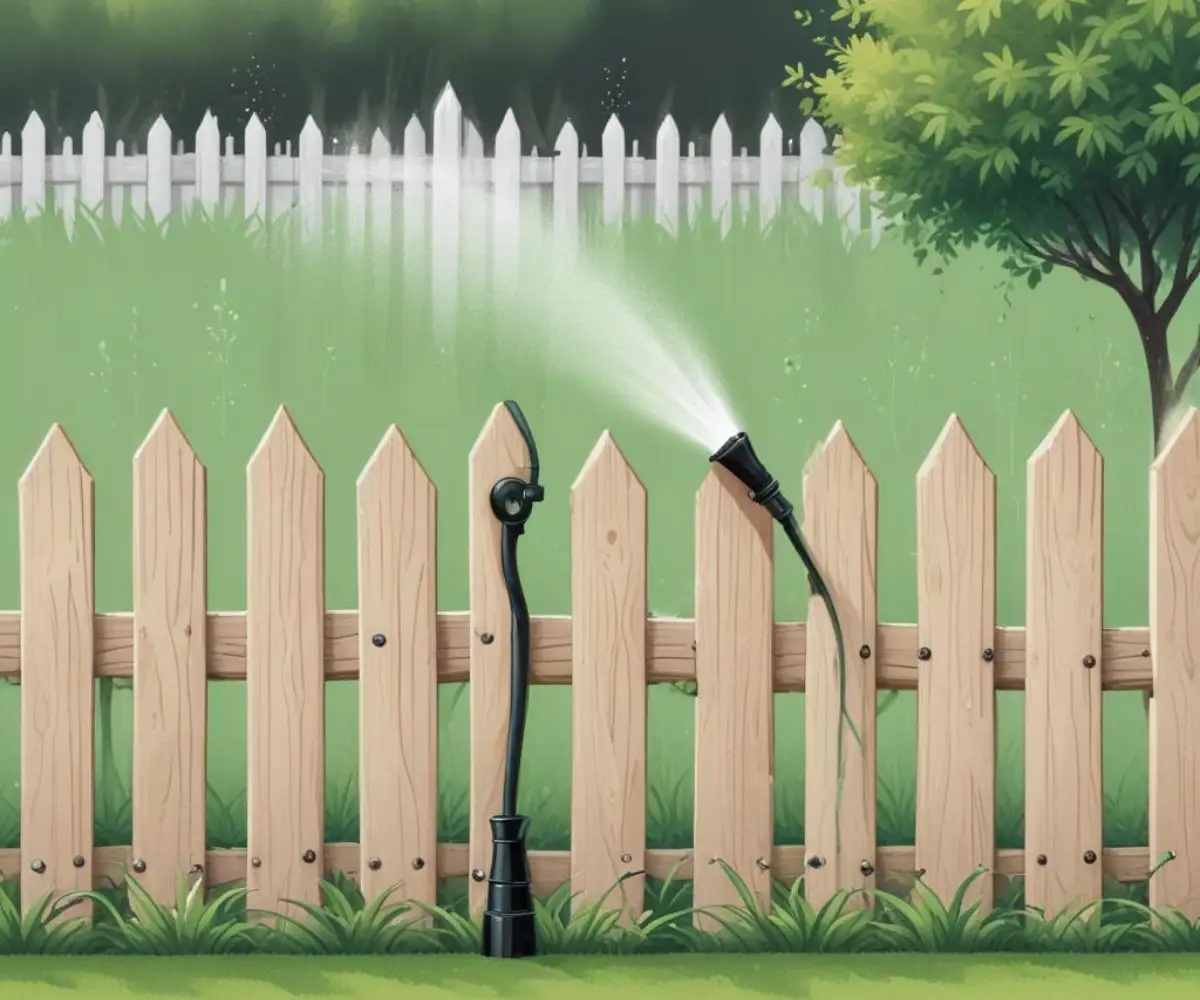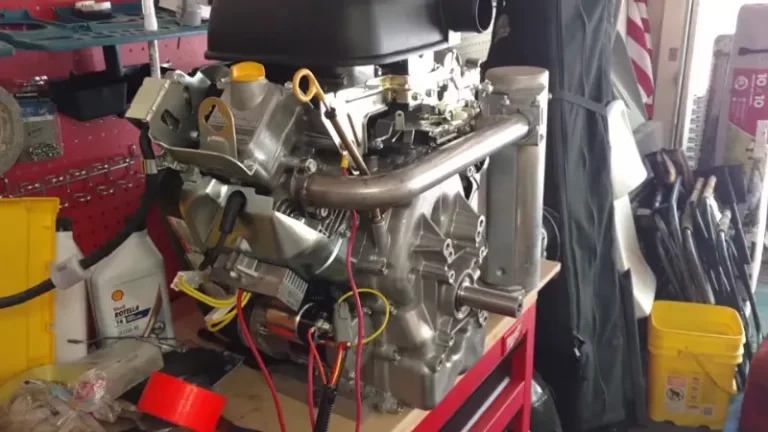Fence Mounted Sprinklers: The Genius Hack for a Perfect Lawn You’re Ignoring
That stubborn, yellowing strip of grass along the fence line is a familiar sight for many homeowners. You move your sprinkler, you adjust the spray, but nothing seems to give that area the consistent water it needs. Meanwhile, your fence is getting soaked, leading to potential water stains or rot.
This frustrating cycle of uneven watering is a common problem. Traditional sprinklers, whether oscillating or impact-style, are designed for wide-open spaces. When placed near a barrier like a fence or a house, their spray patterns are often inefficient, leading to wasted water and a lawn that’s thriving in the middle but struggling at the edges.
You'll Learn About
Why Your Current Sprinkler Is Failing Your Lawn’s Edges
The core of the issue lies in the design of conventional lawn sprinklers. They are built to cover large, open areas, but this becomes a liability along perimeters. Their broad spray arcs inevitably lead to significant overspray onto fences, sidewalks, and driveways.
This overspray isn’t just wasteful; it can cause long-term damage. Constant moisture is detrimental to most fencing materials, especially wood, leading to discoloration, warping, and decay over time. Furthermore, the lawn itself suffers from the inconsistent coverage, resulting in dry, brown patches that detract from your home’s curb appeal.
The Unseen Solution: Taking Your Sprinklers to New Heights
Imagine a watering solution that precisely targets only your lawn and garden, adapting perfectly to tricky narrow spaces and awkward corners. Fence mounted sprinklers offer an elegant and highly effective solution by elevating the water source. This simple change in elevation provides a superior angle for targeted watering, ensuring every inch of your lawn gets the hydration it needs without waste.
This method is exceptionally versatile, making it ideal for the most challenging areas of a yard. From long, narrow side yards to dense flower beds running along a fence, this system provides customizable and precise irrigation. It transforms a common landscaping challenge into an opportunity for a healthier, more vibrant green space.
Choosing the Right Fence Mounted Sprinkler System
When deciding on a fence-mounted system, you have two primary paths: purchasing a pre-made kit or creating your own DIY setup. Pre-made kits from brands like Orbit or Melnor offer convenience and are designed for straightforward installation. A DIY approach, on the other hand, provides maximum flexibility to create a system perfectly tailored to your yard’s specific needs.
Each option has its own set of advantages and considerations. Your budget, the complexity of your yard, and your willingness to take on a weekend project will all play a role in determining the best choice for you.
| Feature | Pre-Made Kits | DIY Systems |
|---|---|---|
| Cost | Generally lower upfront cost for a basic setup. | Can be more expensive depending on the quality and quantity of components. |
| Ease of Installation | Very high. Kits come with all necessary parts and instructions. | Moderate. Requires planning and purchasing individual components. |
| Customization | Limited to the components included in the kit. | Fully customizable. You choose the pipes, fittings, and sprinkler heads. |
| Durability | Typically made of durable plastic, but component quality can vary. | Durability is determined by the quality of the components you select. |
| Best For | Beginners, standard rectangular lawn shapes, and smaller projects. | Complex yard shapes, specific watering needs, and those who enjoy home projects. |
Step-by-Step Installation: A Weekend Project for a Greener Lawn
Installing a fence-mounted sprinkler system is a manageable project that can revolutionize your watering routine. With careful planning and the right tools, you can have a custom irrigation system up and running in just a weekend.
This guide will walk you through the essential steps, from initial planning to final testing, ensuring a successful and leak-free installation.
Step 1: Planning and Measurement
Success begins with a solid plan. Start by sketching your yard and marking the desired locations for your sprinkler heads. The goal is to achieve “head-to-head coverage,” where the spray from one sprinkler reaches the next one in line. This ensures there are no dry spots. Use a tape measure to determine the total length of tubing you will need and check your home’s water pressure to ensure it’s adequate for the number of heads you plan to install.
Step 2: Gathering Your Tools and Materials
Before you begin, assemble all your necessary supplies. This will typically include a drill, screws, mounting clips or brackets, your chosen sprinkler heads, poly tubing or PVC pipe, and the appropriate fittings to connect everything. Having all your materials on hand will make the installation process smooth and efficient.
Step 3: Mounting the Brackets
Securely attach the mounting clips or brackets to your fence at the locations you marked in your plan. Ensure they are firmly in place, as they will support the weight of the water-filled tubing. The type of fastener you use will depend on your fence material—use appropriate screws for wood or vinyl and zip ties or specialized clamps for chain link fences.
Step 4: Running the Water Line
Lay out the poly tubing or PVC pipe along the fence, securing it into the mounting brackets. Start from your water source—typically an outdoor spigot—and run the line along the entire perimeter you intend to water. Be careful not to create sharp bends or kinks in the tubing, as this can restrict water flow.
Step 5: Installing the Sprinkler Heads
At each marked location, use a punch tool to create a hole in the poly tubing. Insert the threaded end of a riser or sprinkler fitting into the hole. Screw your chosen sprinkler heads onto the risers. The key to efficiency is selecting the right nozzle; use narrow strip nozzles for long, thin areas and quarter-circle or half-circle heads for corners and edges to prevent overspray.
Step 6: Connecting to Water and Testing
Connect the start of your tubing to the water source using a hose adapter. Ensure all end caps and fittings are securely tightened. Turn the water on slowly, and walk the length of the system to check for any leaks. Once you’ve confirmed there are no leaks, turn the pressure up and adjust the spray pattern of each sprinkler head for optimal coverage. The precision required is similar to ensuring the correct drop ear elbow depth in a shower installation; small adjustments make a big difference.
The Hidden Benefits You Haven’t Considered
A fence-mounted sprinkler system does more than just water your lawn efficiently. It offers a range of secondary benefits that contribute to a healthier landscape and a more sustainable home. These advantages often go unnoticed but add significant value to this smart irrigation solution.
From conserving a precious resource to improving the aesthetics of your yard, the positive impacts are multifaceted. This system is not just a utility but an upgrade to your entire outdoor living space.

One of the most significant advantages is water conservation. By directing water precisely where it’s needed, you eliminate wasteful overspray, which can significantly lower your monthly water bill. This targeted approach also promotes healthier plant growth by delivering consistent moisture directly to the root zone, reducing the risk of fungal diseases caused by wet foliage.
Furthermore, an elevated system can help deter certain pests that are repelled by a spray from above. Aesthetically, the system is far superior to a garden hose snaking across the grass. The tubing can be discreetly hidden along the top or bottom of the fence line, maintaining a clean and uncluttered look for your yard.
Avoiding Common Pitfalls and Pro-Level Tips
To ensure your system runs flawlessly for years, it’s important to anticipate and address potential issues. Common problems like low water pressure can often be solved by installing a pressure booster or ensuring your pipe diameter is sufficient for the system’s length. Clogged nozzles are another frequent issue, easily fixed by periodically removing and cleaning them.
Winterization is the single most critical maintenance task. Before the first freeze, you must drain all water from the system to prevent pipes from bursting. For a thorough job, consider using an air compressor to blow out any remaining water, a technique that requires care to avoid damaging components, much like the careful handling needed for an old 2-prong air conditioner. Finally, if you have a wooden fence, apply a waterproof sealant where brackets are mounted to prevent moisture from seeping into the wood. Using a high-quality sealant or a backer rod alternative behind the bracket can create a durable, waterproof barrier.
Fence Mounted Sprinklers vs. Traditional Irrigation Systems
When comparing irrigation methods, fence-mounted systems hold a unique and advantageous position. Unlike traditional hose-end sprinklers, they eliminate the daily chore of placement and adjustment, offering a set-it-and-forget-it solution. They provide more consistent and targeted watering, avoiding the dry spots and puddles that often result from manual placement.
Compared to in-ground systems, the most significant benefits are cost and ease of installation. An in-ground system requires extensive trenching, which is both labor-intensive and disruptive to your existing landscape. A fence-mounted system is a fraction of the cost and can be installed with basic tools, making it a much more accessible option for the average homeowner.
Frequently Asked Questions (FAQ)
Can I mount sprinklers on any type of fence?
Yes, these systems are highly adaptable. Brackets and clips are available for wood, vinyl, chain link, and metal fences. The key is to use the correct fasteners to ensure a secure installation.
How far apart should I space the sprinklers?
Spacing depends on the type of sprinkler head and your water pressure. The guiding principle is to achieve head-to-head coverage, where one sprinkler’s spray reaches the next. Refer to the manufacturer’s specifications for the optimal spacing for your chosen heads.
Will it damage my wooden fence?
If installed properly, the risk is minimal. The goal is to adjust the sprinklers to spray away from the fence. Applying a waterproof sealant to the wood around the mounting hardware provides an extra layer of protection against moisture.
Can I connect this to an automatic timer?
Absolutely. Connecting your system to a faucet-mounted automatic timer is highly recommended. This allows you to schedule regular watering cycles, even when you’re away from home, ensuring your lawn stays healthy and green with zero effort.
What’s the best sprinkler head for a narrow garden bed?
For very narrow spaces like garden beds or parking strips, consider using bubblers, drippers, or nozzles with a side-strip pattern. These options deliver water at a low volume and with a very targeted pattern, ensuring plants get watered without soaking surrounding pathways.
A Smarter Way to Water
Ultimately, a fence-mounted sprinkler system is a smarter, more efficient way to maintain a beautiful lawn and garden. It solves the common and frustrating problem of watering tricky perimeter areas, saving you time, water, and money. This system offers a level of precision and convenience that traditional methods simply cannot match.
By investing a single weekend, you can install a custom irrigation solution that yields a healthier landscape for years to come. It’s a practical, effective upgrade that proves the best solutions are sometimes the ones that elevate our perspective.

